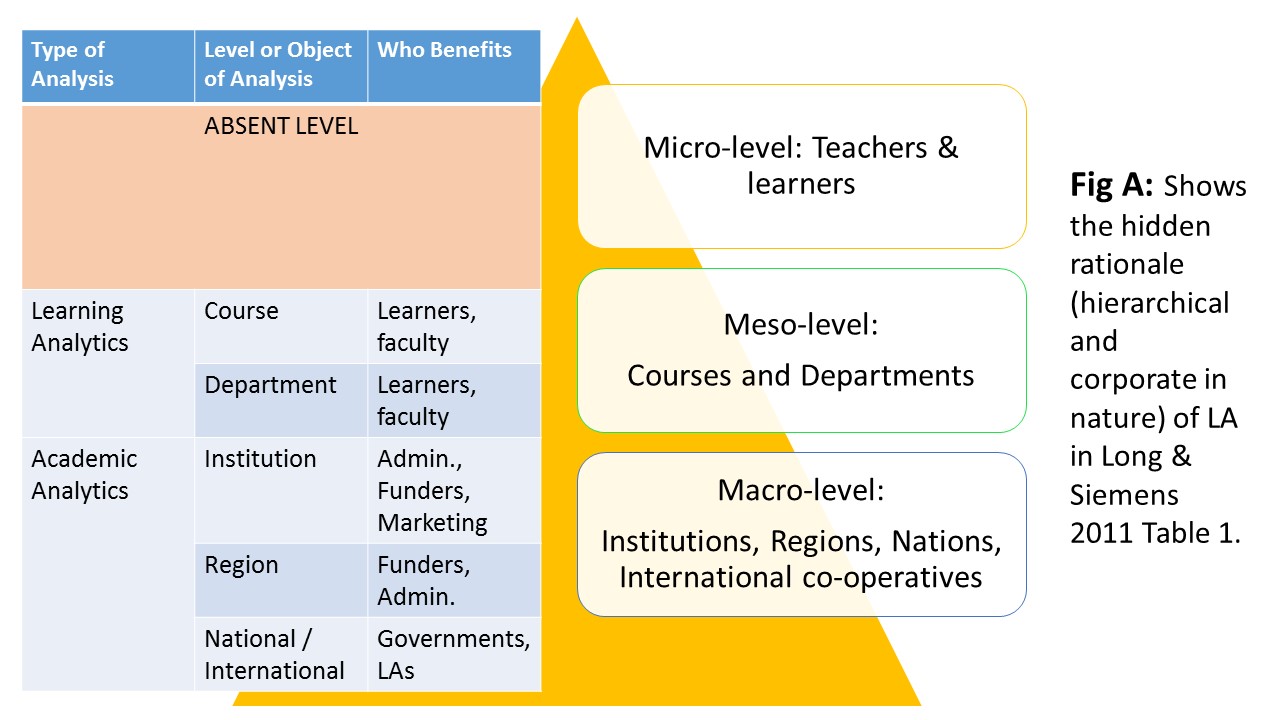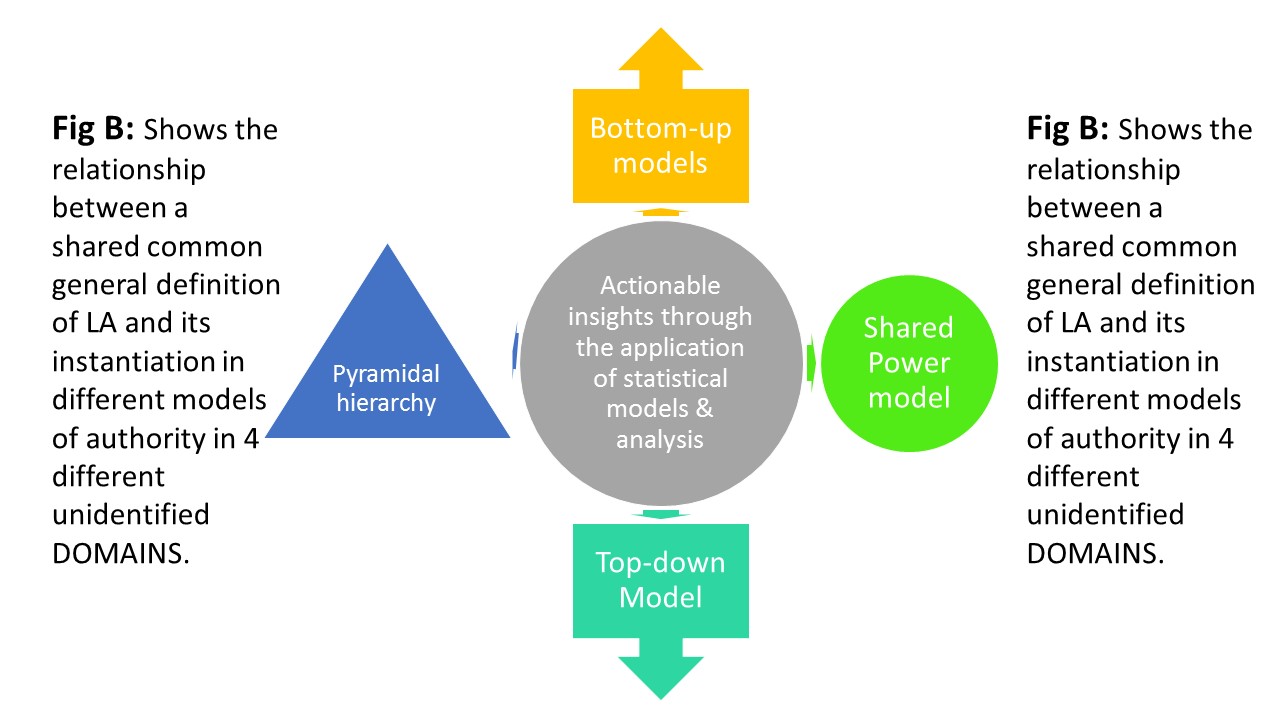Defining Learning Analytics (LA) for Myself H817 Activity 1, part 2.
Thursday 2 June 2016 at 17:57
Visible to anyone in the world
Edited by Steve Bamlett, Sunday 12 June 2016 at 16:04
It is not necessary to read Part 1 first but if you want to, click here: Part 1.
This preliminary account of the set reading aims to assist me to
reflect on problems of definition of emergent concepts in general before attempting a working
definition of LA for myself. This matters to me because the aim of this
exercise appears to be the creation of a ‘definition’ that can be revised
following a number of experiences:
·Reading ‘definitions’ produced by others in the
TGF;
·Ongoing acquaintance with new definitions;
·Use of one’s own definition and reflective
evaluation of limitations and strengths of the definition that arise by virtue
of that use. Use occurs in:
oTGF discussion
oBlog writing
oTMA preparation
oEtc.
The exercise appears to suggest that definitions that
prescribe the meaning and function of the concept are less important than those
that facilitate its ongoing and emergent development as a concept. This seems a liberating potential, although it also seems potentially naïve, since certain
definitions are awarded more status, authority and respect than others in ways
that reflect quite robust power structures external to any use I may make of
the term. But clearly there can be interaction between the term as currently
used by its socially validated champions and my use.
This is the framework I want to go into this exercise with,
at least. This first trial is therefore based entirely on my own interpretive
synthesis of the limited reading set for this exercise.
In speaking of this reading another preliminary strikes me.
The paper by Cooper (2012), although published only one year after Long and
Siemens (2011), appears to me of a great deal more mature and less hyperbolic
than the latter.
In Long & Siemens (2011), the taxonomy which allies and
differentiates it from ‘academic analysis’ appears to be entirely based on the hierarchical
structures which frame the corporate framework of universities as presently
constituted. This is disguised in the tabular presentation of that relationship
on printed as Table 1 in the paper. Pondering this table, I was conscious only
of what, in the work of HE, it omitted. This model barely acknowledges
interactions at levels lower than the department or course. Where, I ask
myself, are individual teachers and learners in all this at the micro-level of
the university’s operation?
This led me to see that the diagram needed reconfiguring
precisely as a hierarchy to show that missing level and to query whether LA in
this paper is not too bound in purely corporate terms. Here is my go at that
(Fig A).
Of course, we see here that teachers and learners are
represented here as beneficiaries of departmental operations. Such a role
offers them, as individuals at least, relatively NO agency in LA. Even in the
abstract, this is not ‘good enough’.
I don’t for one minute that corporate interest in LA will go
away – it is, after all, what it shares in common with other corporations who
initiated predictive analytics, like Amazon.
That is what attracts me to Cooper (2012) who shows that LA
will be reconfigured in relation to the domain it belongs and that that
relationship does not necessitate a pyramidal power structure (as I try to show
in my version (Fig. B). Hence he pictures the instantiations of LA in Fig 1
(p.6) as satellite ‘domains’ to a ‘HUB’ concept. Those ‘domains share features
with each other but, potentially at least might shape themselves differently –
into ‘flatter’ power structures for instance.
Having said that, should we accept Cooper’s HUB definition.
It seems strong and my knowledge base isn’t strong enough to improve upon it.
Here it is as MY definition, a little expanded:
Steve’s definition:
A process of analysis which produces actionable insights by
the application of analytic methods appropriate to their contexts.
At the last minute, I decided not to commit my hub
definition to the primacy of statistical models as analysis and hence (not yet till
I have read & experimented further) to quantitative methods alone. I wanted to express an old-fashioned respect for context rather than to fall 'head over heels' for Big Data and inference from correlations. Will I learn better? We will see!
Updated: 12/06/2016 to:
New definition:
A process of analysis which produces actionable insights related to teaching and learning (TL) by the application of analytic methods appropriate to their contexts. It is applied to a number of issues important to the design of TL, including environmental and other resources, such as libraries. (updated 12/06/2016)
Defining Learning Analytics (LA) for Myself H817 Activity 1, part 2.
It is not necessary to read Part 1 first but if you want to, click here: Part 1.
This preliminary account of the set reading aims to assist me to reflect on problems of definition of emergent concepts in general before attempting a working definition of LA for myself. This matters to me because the aim of this exercise appears to be the creation of a ‘definition’ that can be revised following a number of experiences:
o TGF discussion
o Blog writing
o TMA preparation
o Etc.
The exercise appears to suggest that definitions that prescribe the meaning and function of the concept are less important than those that facilitate its ongoing and emergent development as a concept. This seems a liberating potential, although it also seems potentially naïve, since certain definitions are awarded more status, authority and respect than others in ways that reflect quite robust power structures external to any use I may make of the term. But clearly there can be interaction between the term as currently used by its socially validated champions and my use.
This is the framework I want to go into this exercise with, at least. This first trial is therefore based entirely on my own interpretive synthesis of the limited reading set for this exercise.
In speaking of this reading another preliminary strikes me. The paper by Cooper (2012), although published only one year after Long and Siemens (2011), appears to me of a great deal more mature and less hyperbolic than the latter.
In Long & Siemens (2011), the taxonomy which allies and differentiates it from ‘academic analysis’ appears to be entirely based on the hierarchical structures which frame the corporate framework of universities as presently constituted. This is disguised in the tabular presentation of that relationship on printed as Table 1 in the paper. Pondering this table, I was conscious only of what, in the work of HE, it omitted. This model barely acknowledges interactions at levels lower than the department or course. Where, I ask myself, are individual teachers and learners in all this at the micro-level of the university’s operation?
This led me to see that the diagram needed reconfiguring precisely as a hierarchy to show that missing level and to query whether LA in this paper is not too bound in purely corporate terms. Here is my go at that (Fig A).
Of course, we see here that teachers and learners are represented here as beneficiaries of departmental operations. Such a role offers them, as individuals at least, relatively NO agency in LA. Even in the abstract, this is not ‘good enough’.
I don’t for one minute that corporate interest in LA will go away – it is, after all, what it shares in common with other corporations who initiated predictive analytics, like Amazon.
That is what attracts me to Cooper (2012) who shows that LA will be reconfigured in relation to the domain it belongs and that that relationship does not necessitate a pyramidal power structure (as I try to show in my version (Fig. B). Hence he pictures the instantiations of LA in Fig 1 (p.6) as satellite ‘domains’ to a ‘HUB’ concept. Those ‘domains share features with each other but, potentially at least might shape themselves differently – into ‘flatter’ power structures for instance.
Having said that, should we accept Cooper’s HUB definition. It seems strong and my knowledge base isn’t strong enough to improve upon it. Here it is as MY definition, a little expanded:
Steve’s definition:
A process of analysis which produces actionable insights by the application of analytic methods appropriate to their contexts.
At the last minute, I decided not to commit my hub definition to the primacy of statistical models as analysis and hence (not yet till I have read & experimented further) to quantitative methods alone. I wanted to express an old-fashioned respect for context rather than to fall 'head over heels' for Big Data and inference from correlations. Will I learn better? We will see!
Updated: 12/06/2016 to:
New definition:
A process of analysis which produces actionable insights related to teaching and learning (TL) by the application of analytic methods appropriate to their contexts. It is applied to a number of issues important to the design of TL, including environmental and other resources, such as libraries. (updated 12/06/2016)
All the best
Steve